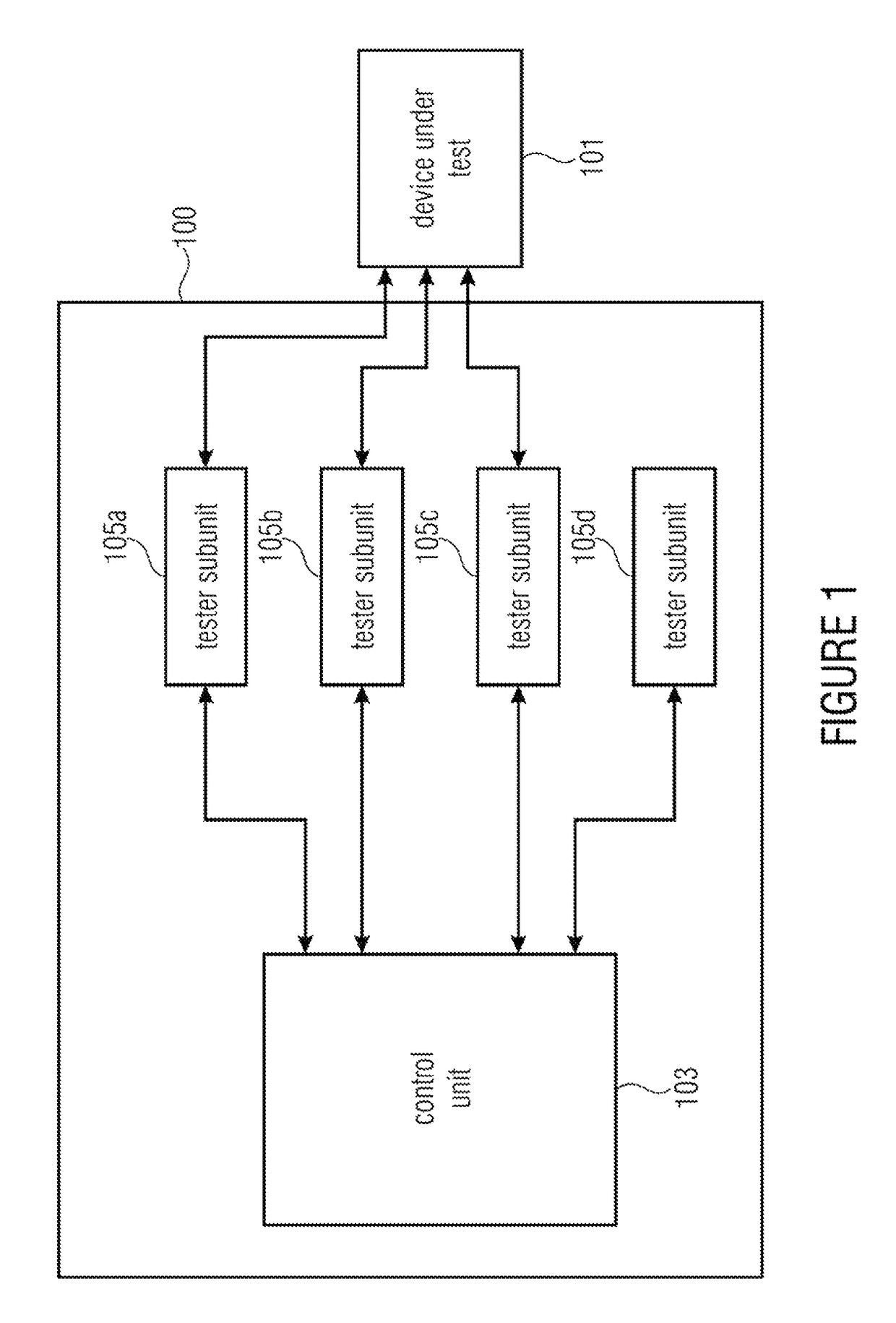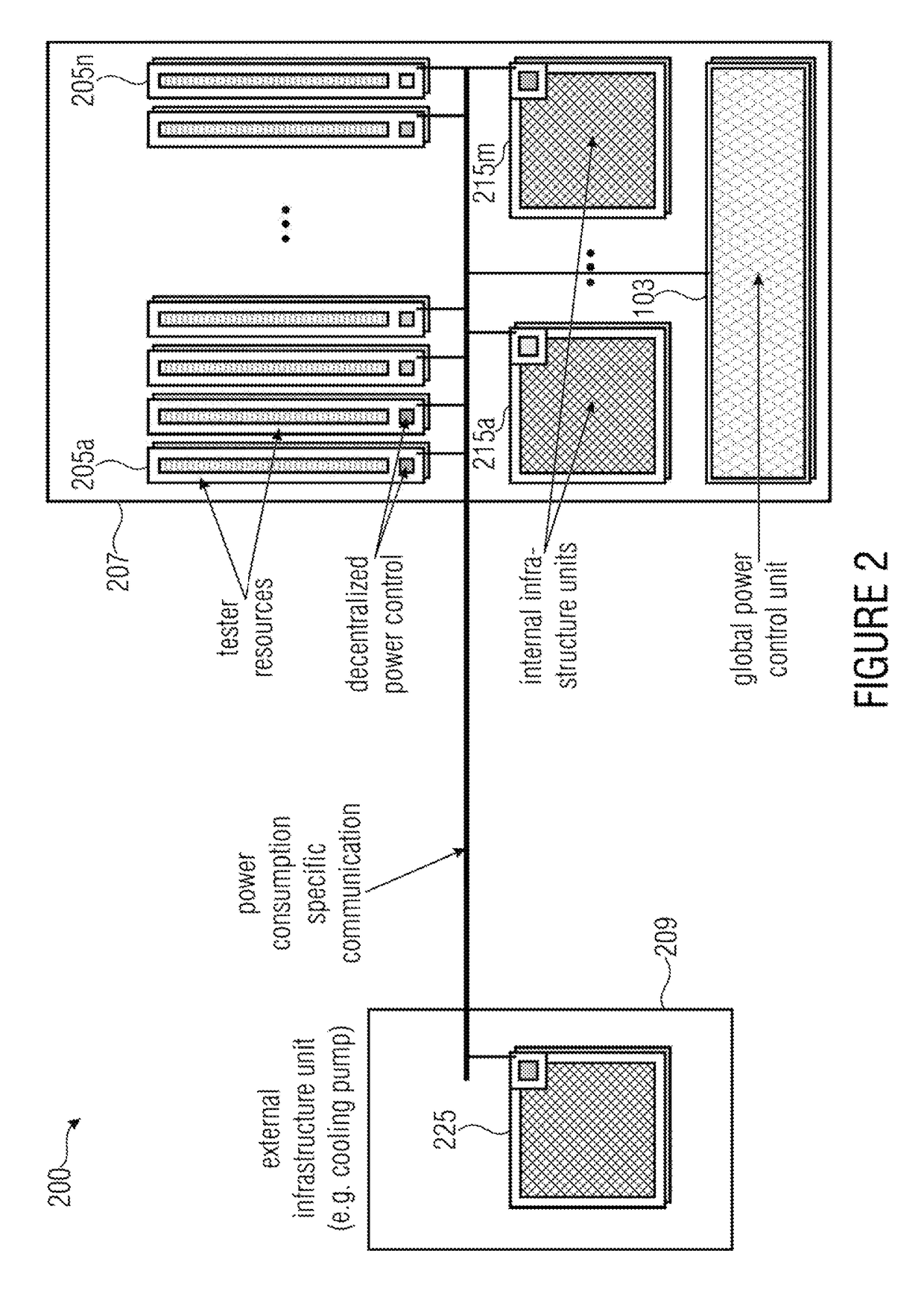Automated test equipment for testing a device under test and method for testing a device under test
a technology of automatic testing equipment and test equipment, which is applied in the direction of automated testing systems, instruments, error detection/correction, etc., can solve the problems of increasing the cost of electrical energy, increasing the cost of operation, and reducing the competitiveness of test floors containing many ate, so as to achieve the effect of reducing power consumption
- Summary
- Abstract
- Description
- Claims
- Application Information
AI Technical Summary
Benefits of technology
Problems solved by technology
Method used
Image
Examples
Embodiment Construction
[0028]Before embodiments of the present invention are described in detail, it is to be pointed out that the same or functionally equivalent elements are provided with the same reference numbers and that a repeated description of elements having the same reference numbers is omitted. Hence, descriptions provided for elements having the same reference numbers are mutually exchangeable.
[0029]FIG. 1 shows a block schematic diagram of an automated test equipment 100 (ATE 100) for testing a device under test 101 according to an embodiment of the present invention.
[0030]The automated test equipment 100 comprises a control unit 10 and a plurality of tester subunits 105a-105d. Although in the example shown in FIG. 1 the automated test equipment 100 comprises four tester subunits 105a-105d, this number of tester subunits may be arbitrary and may depend on the purpose of the automated test equipment 100. Furthermore, although in the example shown in FIG. 1 the automated test equipment 100 is o...
PUM
 Login to View More
Login to View More Abstract
Description
Claims
Application Information
 Login to View More
Login to View More - R&D
- Intellectual Property
- Life Sciences
- Materials
- Tech Scout
- Unparalleled Data Quality
- Higher Quality Content
- 60% Fewer Hallucinations
Browse by: Latest US Patents, China's latest patents, Technical Efficacy Thesaurus, Application Domain, Technology Topic, Popular Technical Reports.
© 2025 PatSnap. All rights reserved.Legal|Privacy policy|Modern Slavery Act Transparency Statement|Sitemap|About US| Contact US: help@patsnap.com



